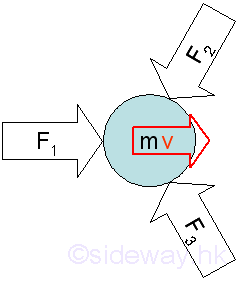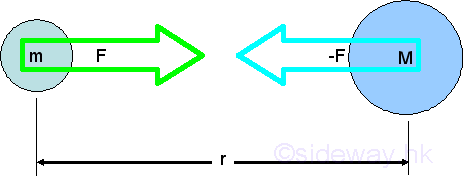Introduction
Mechanics
Mechanics is a scientific study of objects under the action of forces by the description and prediction of their conditions in equilibrium or in motion.
The three areas of study are mechanics of rigid bodies, mechanics of deformable solids and mechanics of fluids.
For mechanics of rigid bodies, it can be subdivided into statics, and dynamics.
Principles
The study of mechanics are mainly based on the fundamental principles formulated by Newton in 1687.
Because of the implications of Einstein's first theory of relativity in 1905, the limitation of these principles are recognized. However, newtonian mechanics still applies in engineering sciences as the basis because the errors due to special relativity can be ignored at low speeds and weak gravitational fields.
The Principles includes Newton's three laws of motion, which are
- First Law: A particle continues its state at rest or in
motion with constant speed in a straight line, when the resultant force acting
on it is zero.

- Second Law: When the resultant force acting on a particle is
not zero, the net force will be equal to the time rate of change of the
particle's linear momentum. As the mass is constant, the acceleration of the
particle
will be proportional to the magnitude and in the direction of the net applied
force.

- Third Law: For the forces of action on particles, there are
always reaction forces which have the same magnitude along the same line of
action but in opposite sense in response to the applied forces.

And Newton's laws of gravitation, which states
- Every particle attracts other particle by a mutual force
pointing to each other having same magnitude and opposite sense along the line
intersecting both particles. The magnitude of the force is directly proportional
to the product of the two particle masses and inversely proportional to the square of the
distance between the particles.

Concepts
The basic concepts used for the formulation of three laws of motion are space, time, mass, and force.
-
Space is associated with the position of a point in a three dimensional system with reference to a reference point, or an origin.
-
Time is used to describe a succession of evevts
-
Mass is used to characterize the inertia of an object by comparing the resistance of a material object to change in motion under exerting the necessary effort of action.
-
Force is the effort used to change the motion of an object.
©sideway
ID: 101200013 Last Updated: 1/14/2011 Revision: 1
Latest Updated Links
- Panasonic SR-CK05 RiceCooker CW-HZ70AA(last updated On 11/17/2025)
- Panasonic Hood Structure Ventilating Fan Blade Diameter: 8in FV-20WH307 CW-HZ70AA(last updated On 11/16/2025)
- Panasonic Window Mount Thermo Ventilator FV-30BW2H CW-HZ70AA(last updated On 11/15/2025)
- Panasonic Inverter PRO Inverter Window Heatpump Air-Conditioner (3/4 HP) CW-HZ70AA(last updated On 11/14/2025)
- Panasonic Inverter Window-Split Type Cooling Only Air-Conditioner (1 HP) CS-U9YWA(last updated On 11/13/2025)
- Panasonic Inverter Steam and Grill_Microwave Oven 27L NN_DS59NB(last updated On 11/12/2025)
- Panasonic KY-C223B Induction Cooker(last updated On 11/11/2025)
- Focus M41 Single lever kitchen mixer 160(last updated On 11/10/2025)
- Focus Single lever basin mixer 230(last updated On 11/9/2025)
- Precision Start Thermostat shower mixer(last updated On 11/8/2025)
- Tempesta 100 Shower Rail Set 3 sprays(last updated On 11/7/2025)

 Nu Html Checker
Nu Html Checker  53
53  na
na  na
na
Home 5
Business
Management
HBR 3
Information
Recreation
Hobbies 8
Culture
Chinese 1097
English 339
Travel 18
Reference 79
Hardware 40
Computer
Hardware 259
Software
Application 213
Digitization 37
Latex 52
Manim 205
KB 1
Numeric 19
Programming
Web 289
Unicode 504
HTML 66
CSS 65
SVG 46
ASP.NET 270
OS 431
DeskTop 7
Python 72
Knowledge
Mathematics
Formulas 8
Set 1
Logic 1
Algebra 84
Number Theory 206
Trigonometry 31
Geometry 34
Calculus 67
Engineering
Tables 8
Mechanical
Mechanics 1
Rigid Bodies
Statics 92
Dynamics 37
Fluid 5
Control
Acoustics 19
Natural Sciences
Matter 1
Electric 27
Biology 1
